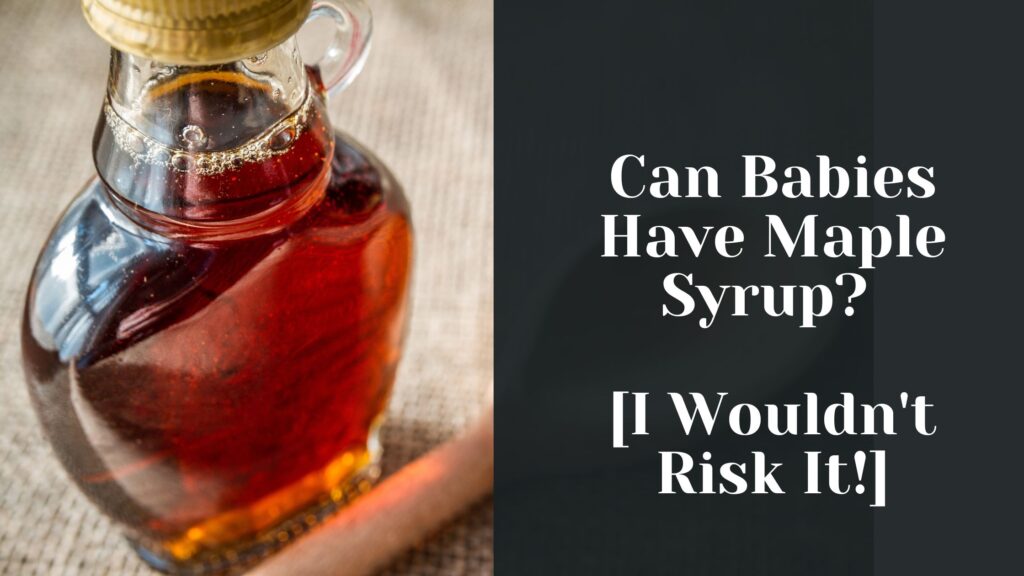Feeding your baby solid foods is an exciting milestone, but it can also be overwhelming, especially if you’re not sure what foods are safe and nutritious for your little one.
One common question many parents have is whether babies can eat rice, and if so, how should it be prepared and served?
In this blog post, I’ll answer these questions and provide you with helpful tips for feeding your baby rice.
However, please remember that I am not a doctor and you should always consult your pediatrician before feeding your baby new foods 🙂
Can Babies Eat Rice?
Yes, rice is a great option for babies who are at least six months old.
However, it is important to check whether your baby shows signs of readiness for solid foods.
These signs include being able to sit up and hold their head steady, as well as showing an interest in food and being able to coordinate their mouth and tongue to swallow.
If your baby has a history of allergies or digestive problems, check with your pediatrician before introducing rice or any other solid foods.
Nutritional Benefits of Rice for Babies
In addition to being a great source of carbohydrates and protein, rice also contains several minerals that are essential for healthy growth and development.
One such mineral is iron, which is important for healthy blood cell production, while zinc plays a role in immune function and wound healing.
Rice also contains B vitamins, which are important for energy production and brain function.
For instance, thiamin (vitamin B1) is necessary for converting food into energy, while niacin (vitamin B3) is important for brain function and digestion.
When introducing rice to your baby, it’s important to choose a variety that is nutrient-dense and easy to digest.
Brown rice is a good option, as it contains more fiber, vitamins, and minerals than white rice, but it does contain more arsenic than white rice, so make sure you rinse it thoroughly.
You can also choose organic rice to minimize the risk of exposure to harmful chemicals or contaminants.
Providing your baby with a varied diet that includes rice and other nutritious foods can help to ensure that they are getting all the necessary nutrients for healthy growth and development.
Health Hazards of Feeding Rice for Babies
While rice is generally safe for babies, there are potential health hazards associated with feeding rice to babies.
One concern is the presence of arsenic in some types of rice.
Arsenic is a naturally occurring element that can be found in soil, water, and air.
It can accumulate in rice and other crops, especially those grown in areas with high levels of arsenic in the soil or water.
According to the FDA, brown rice has much higher levels of arsenic than white rice, so rinsing brown rice thoroughly before cooking can help to reduce arsenic levels.
How to Serve Rice to Babies
When it comes to serving rice to babies, there are a few things to keep in mind.
First, it’s best to start with a small amount and to monitor your baby’s reaction to it.
If your baby shows signs of an allergic reaction, such as a rash, hives, or difficulty breathing, stop feeding them rice and contact your pediatrician right away.
To make rice easier for your baby to swallow, you can puree or mash it with a fork or a baby food grinder.
You can also add breast milk, formula, or water to make it thinner and easier to swallow.
As your baby gets older and more accustomed to solid foods, you can gradually increase the texture of the rice.
It’s also important to avoid adding any salt, sugar, or spices to rice when serving it to your baby, as their taste buds are still developing, and these additives can be harmful to their health.
Alternatives to Rice for Babies
If your baby doesn’t tolerate rice well or if you want to provide some variety in their diet, there are many other grains and foods that are nutrient-dense and easy to prepare.
Some great alternatives to rice include:
- Quinoa: a high-protein grain that’s easy to digest and has a nutty flavor
- Oats: a great source of fiber and iron that can be cooked and mashed for babies
- Barley: a good source of fiber and vitamins that can be cooked and mashed like rice
- Sweet potatoes: a nutritious and delicious vegetable that can be baked or steamed and mashed for babies
Providing your baby with a variety of nutritious foods can help to ensure that they are getting all the necessary nutrients for healthy growth and development.
Quinoa
Quinoa is a high-protein grain that’s easy to digest and has a nutty flavor.
It’s a great source of essential amino acids, which are important for healthy growth and development.
Quinoa also contains several minerals, such as iron, magnesium, and phosphorus, which are essential for bone health and energy production.
To feed quinoa to your baby:
- Rinse it thoroughly
- Cook it in boiling water until it’s soft and tender
- Puree or mash it with breast milk, formula, or water to make it easier to swallow
As your baby gets older and more accustomed to solid foods, you can gradually increase the texture and thickness of the quinoa.
Oats
Oats are a great source of fiber and iron that can be cooked and mashed for babies.
They also contain several vitamins and minerals, such as vitamin B6, magnesium, and zinc.
To feed oats to your baby:
- Cook them in boiling water until they’re soft and tender
- Mash or puree them with breast milk, formula, or water
- You can also mix in fruits, such as bananas or berries, to make them more appealing to your baby
Barley
Barley is a good source of fiber and vitamins that can be cooked and mashed like rice.
It also contains several minerals, such as selenium, copper, and manganese, which are important for healthy bone growth and immune function.
To feed barley to your baby:
- Rinse it thoroughly and cook it in boiling water until it’s soft and tender
- Puree it
- Mix in vegetables, such as carrots or sweet potatoes, to add flavor and nutrients
Sweet Potatoes
Sweet potatoes are a nutritious and delicious vegetable that can be baked or steamed and mashed for babies.
They’re a great source of vitamins A and C, which are important for eye health and immune function.
Sweet potatoes also contain several minerals, such as potassium and manganese.
To feed sweet potatoes to your baby:
- Bake or steam them until they’re soft and tender
- Mash them with breast milk, formula, or water
- You can also mix in a small amount of cinnamon or nutmeg to add flavor and nutrients
Rice Cereal vs. Regular Rice for Babies
Another common question parents have is whether rice cereal is better than regular rice for babies.
Rice cereal is a common first food for babies, as it’s easy to digest and fortified with iron, which is important for healthy development.
However, it’s important to note that rice cereal can be high in arsenic, especially if it’s made with brown rice.
To minimize the risks, you could make rice cereal at home using basmati rice, since this type of rice has lower levels of arsenic.
Regular rice can also be a great option for babies, as long as it’s rinsed and cooked properly.
Conclusion
Rice can be a nutritious and safe food to introduce to your baby, as long as it’s prepared and served properly.
It’s important to wait until six months to introduce solid foods and to monitor your baby’s reaction to different foods.
Providing your baby with a varied diet that includes rice and other nutritious foods can help to ensure that they are getting all the necessary nutrients for healthy growth and development.
If you have any concerns or questions about feeding rice or other solid foods to your baby, be sure to consult with your pediatrician or other healthcare professional for advice.


